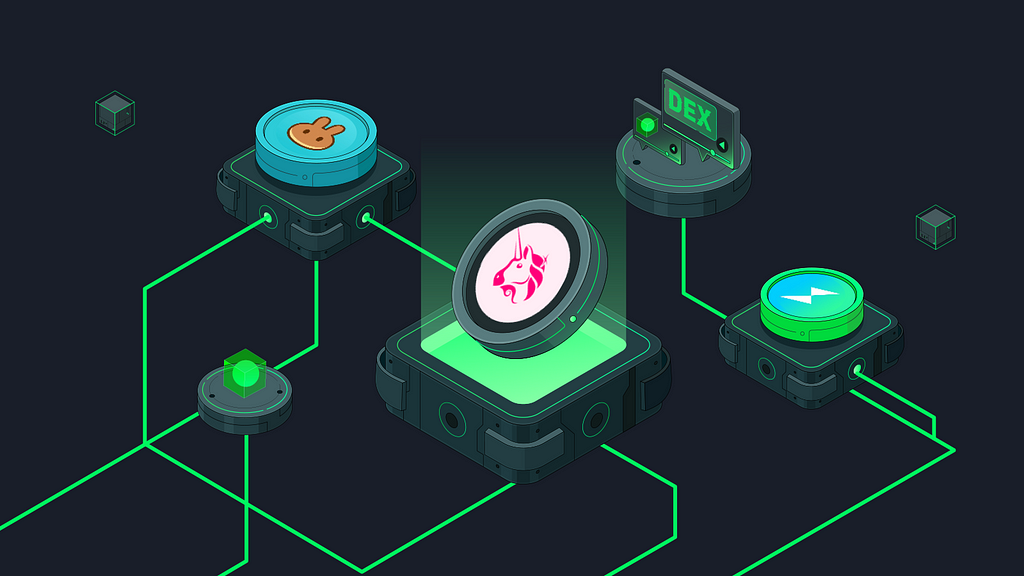
Introduction to Decentralized Exchanges (DEXs)
Decentralized exchanges (DEXs) represent a significant shift in the cryptocurrency trading landscape. Unlike centralized exchanges, which act as intermediaries and hold users’ funds, DEXs operate on blockchain technology, allowing users to trade directly with one another in a peer-to-peer manner. This model enhances user control over assets, improves privacy, and increases security.
The rise of DEXs has been fueled by the growing demand for transparency and autonomy in financial transactions. With DEXs, users retain control of their private keys and funds, reducing the risk of hacks and mismanagement associated with centralized platforms. As the decentralized finance (DeFi) ecosystem continues to evolve, understanding the core features that make a DEX successful becomes essential for businesses looking to enter this market.
Top 5 Features Every Decentralized Exchange Should Have
1. Robust Security Measures
Security is fundamental for any trading platform, especially in the cryptocurrency space where risks are prevalent. Essential security features include:
Multi-Signature Wallets: These wallets require multiple approvals for transactions, significantly lowering the risk of unauthorized access.
Regular Security Audits: Conducting thorough audits of smart contracts can help identify vulnerabilities before they are exploited.
Two-Factor Authentication (2FA):This adds an extra layer of security during user logins, making it harder for unauthorized users to gain access.
By prioritizing security, DEXs can foster trust among their users, which is vital for long-term success.
2. User-Friendly Interface
An intuitive user interface (UI) is crucial for attracting and retaining users. Key elements include:
Clear Navigation: Users should easily locate essential functions like trading pairs and transaction histories.
Responsive Design: The platform should be accessible on various devices, including desktops and mobile phones.
Educational Resources: Tutorials or guides can assist new users in navigating the platform effectively.
A well-designed UI not only enhances user satisfaction but also encourages frequent trading activity.
3. Decentralization and Governance
True decentralization is a hallmark of DEXs. Key aspects include:
User Control Over Assets: Users maintain control over their funds throughout the trading process.
Governance Mechanisms: Implementing governance tokens allows users to participate in decision-making regarding platform changes or upgrades.
This approach aligns with the values of the blockchain community and fosters user loyalty.
4. Liquidity Solutions
Liquidity is critical for facilitating trades without impacting market prices. DEXs should consider:
Automated Market Makers (AMMs): These systems use liquidity pools to enable trades without relying on order books, ensuring continuous trading opportunities.
Liquidity Incentives: Offering rewards for providing liquidity can enhance market depth and reduce slippage during trades.
Effective liquidity solutions improve user experience and attract more traders to the platform.
5. Comprehensive Analytics and Reporting Tools
Understanding market trends is vital for optimizing exchange performance. DEXs should integrate:
Real-Time Analytics Dashboards: These provide insights into trading volumes and user activity, helping operators make informed decisions.
Transaction History Tracking: Users should have access to detailed records of their trades for personal accounting and tax reporting.
Robust analytics tools empower users with valuable information while enhancing operational transparency.
Future of Decentralized Exchanges
The future of DEXs looks promising as they continue to evolve alongside technological advancements and market demands. Key trends shaping this future include:
Increased Institutional Participation: As decentralized trading attracts institutional investors, we can expect the development of institutional-grade DEXs that offer superior features and compliance measures.
Hybrid Exchanges: These platforms combine elements of both centralized and decentralized exchanges, providing a balanced solution that appeals to a broader audience by addressing the shortcomings of both models.
Cross-Platform Integration: Future DEXs are likely to integrate with other blockchain platforms and applications, improving functionality and offering users a seamless experience across different environments.
Regulatory Compliance: As regulations around cryptocurrencies evolve, DEXs will need to implement compliance measures that do not hinder decentralization while protecting users.
The integration of advanced technologies will enhance scalability and interoperability, paving the way for more efficient trading experiences. As these developments unfold, DEXs will play an increasingly vital role in the cryptocurrency ecosystem.
Conclusion
Incorporating essential features such as robust security measures, user-friendly interfaces, decentralization mechanisms, effective liquidity solutions, and comprehensive analytics will significantly enhance any decentralized exchange’s functionality and appeal. As businesses explore opportunities in DEX development, focusing on these aspects is crucial for creating a successful platform that meets user needs.
For those interested in developing their own decentralized exchange, partnering with an experienced DEX development company like Codezeros can provide valuable insights and expertise. Their knowledge in building secure and efficient trading platforms will guide you through every step of your journey into decentralized finance. Contact Codezeros today to start your venture into the world of DEX!
Top 5 Features Every Decentralized Exchange Should Have was originally published in Coinmonks on Medium, where people are continuing the conversation by highlighting and responding to this story.








